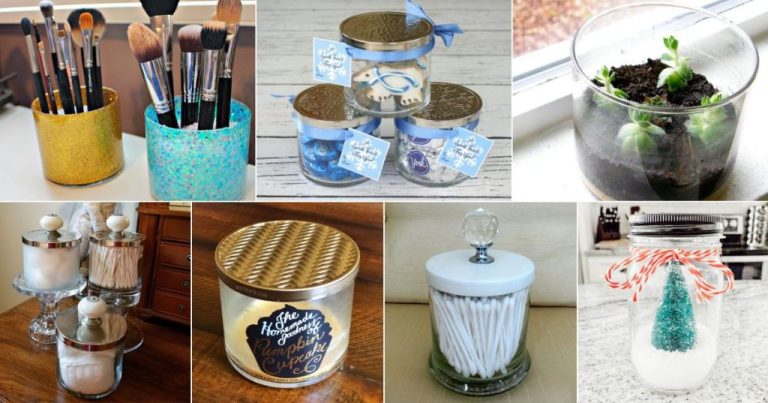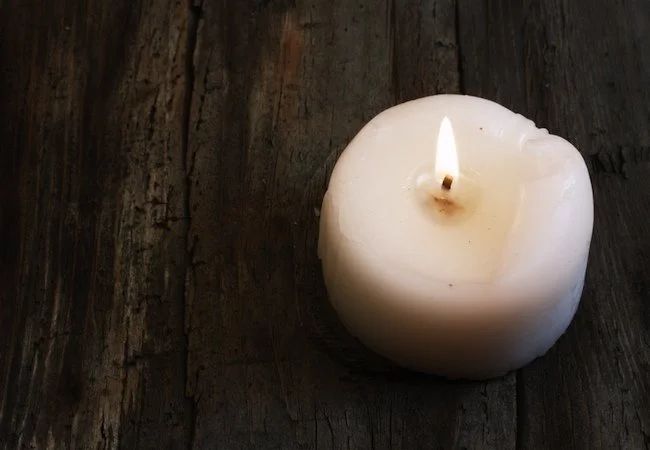How Much Does It Cost To Start A Candle Business?
Starting a candle business involves many steps, from researching the market and finding your product niche, to purchasing equipment and supplies, developing candle recipes, setting up business operations, and marketing your products. This article provides an overview of the key considerations, costs, and steps involved in launching a successful candle business.
We will cover topics including determining your candle niche and target market, product development and testing, business registration and licensing, setting up facilities and buying equipment, sourcing wax and fragrance suppliers, branding and marketing strategies, identifying sales channels, and estimating startup costs. By the end, you will have a thorough understanding of the investment and work required to start a candle company.
Whether you want to sell at local markets or create an ecommerce candle brand, you can gain fundamental knowledge here about building every aspect of a candles business. With careful planning and passion for your products, you can turn candle making into a rewarding and profitable entrepreneurial venture.
Finding Your Niche
When starting a candle business, it’s important to find a specific niche to focus on. This allows you to cater to a target audience and stand out from competitors. Some popular candle niches include:
Scented candles – These remain a top seller, with options like floral, bakery, or seasonal scents. Consider specializing in scent profiles like masculine, natural, or luxury.According to Reddit users, unique scent combinations can help you find a niche.
Soy candles – These natural, clean-burning candles appeal to eco-conscious consumers. You could focus on organic soy wax or essential oil blends.
Beeswax candles – Valued for their natural honey scent, these appeal to customers looking for non-toxic products. They’re perceived as high-end.
The benefit of specialization is appealing directly to customers interested in that specific candle style. This targeted approach makes marketing and positioning your brand easier compared to general candle selling. Your expertise in the niche also builds credibility and loyalty.
Product Development
One of the most important steps when starting a candle business is developing your candle formulas and products. This involves determining what types of candles you will make, creating unique scent blends, and testing out candle making techniques.
According to CandleScience.com (https://www.candlescience.com/learn-candle-making/), when formulating candle scents, you can blend essential oils and fragrance oils to create custom scents. It’s recommended to keep scent blends simple at first, combining 2-3 complimentary scents.
Testing is crucial to perfect your candle making method and find the right wax, wick, fragrance, and vessel combinations. The Shopify guide (https://www.shopify.com/blog/how-to-make-candles) suggests testing different wax types like soy, paraffin, or beeswax to determine the ideal texture, burn quality, and scent throw.
Once you’ve developed some winning candle formulas, you’ll need to source high-quality candle making ingredients and supplies like wax, wicks, fragrance oils, vessels, and packaging. Purchasing in bulk from reputable suppliers can help lower costs.
Business Registration
One of the first steps in starting a candle business is to establish your business structure and register your business name. The most popular options for small businesses are to form a sole proprietorship or a limited liability company (LLC). An LLC helps separate your personal assets from the business and provides liability protection.
To form an LLC, you’ll need to choose a business name and register it with your state. You can check name availability and file online through your state’s website, usually the Secretary of State’s office. There is typically a filing fee of $50-500 depending on the state. You’ll also need to create an operating agreement detailing ownership percentages and rules.
Once your LLC is registered, you should obtain an Employer Identification Number (EIN) from the IRS. This establishes your business identity for tax purposes. You can easily apply for an EIN online at www.irs.gov.
It’s also recommended to register your business locally and obtain any necessary licenses and permits. For example, you may need a seller’s permit, business license, or zoning permit depending on where you are located. Check with your city and county clerk’s office on requirements. (source)
Facilities
When starting a candle business, you have two main options for facilities: operating out of your home or leasing commercial space. Home-based operations have lower startup costs but commercial spaces allow for more growth. There are some key considerations for each.

For a home-based candle business, you’ll need to dedicate space for production, storage, shipping, and office work. This could be a basement, garage, shed, or spare room. Make sure to check local zoning laws and homeowner association rules to ensure candle making is allowed from your residence. You may need permits or inspections. Expect costs of a few hundred to a few thousand dollars to properly outfit your home workspace.
Leasing commercial space allows more room for inventory, employees, and equipment as you scale up. Warehouse spaces of 1,000 – 5,000 sq ft are common for small candle makers. According to CandleScience, leasing costs range from $3/sq ft in small towns to $10/sq ft in major cities. Upfront costs can be $10,000 – $100,000.
For safety, candle production areas need proper ventilation, fire sprinklers/extinguishers, and chemical storage. Whether home-based or commercial, your facilities must meet building codes and zoning regulations in your state and municipality.
Equipment
When starting a candle business, some of the essential equipment you’ll need includes:
- Wax melter – Used to melt wax to the proper temperature before pouring into molds. Popular options are double boiler wax melters and electric wax melters, which range from $50-$500 (https://www.candlescience.com/equipment/).
- Pouring pot – Used to hold melted wax before pouring into molds. Aluminum and stainless steel pots with pour spouts typically cost $15-$50 (https://www.betterbee.com/candle-making/candle-making-tools-and-supplies.asp).
- Molds – Shapes wax into candles. Popular options are silicone molds ($5-$30) and metal or plastic molds ($10-$100) (https://candlewic.com/).
- Wicks – The cord that burns inside the wax to form the flame. Common options are cotton, wood, and paper wicks sold in spools or tabs ($3-$15) (https://www.candlescience.com/equipment/).
- Packaging – Jars, tins, boxes to contain finished candles. Minimum of $0.50-$5 per unit.
Investing in quality equipment upfront will help ensure you can produce consistent, high-quality candles for your business.
Suppliers
When starting a candle business, you’ll need to find suppliers for the key ingredients like wax, fragrance oils, wicks, and jars. Some top suppliers for candle making include Candlewic, Pro Candle Supply, and Lone Star Candle Supply. These companies offer a wide selection of waxes, fragrances, wicks, jars, dyes, molds, and other candle making supplies at wholesale prices.
Look for suppliers that cater specifically to candle makers rather than general craft stores. Specialty candle suppliers will have the best variety and quantities for those starting a business. Make sure to compare the different wax options like soy, paraffin, beeswax or palm wax to choose the right one for your candles. Also sample multiple fragrances to find the perfect scents for your brand. Consider getting sample sizes of wicks and jars to test too.
Many candle suppliers also offer starter kits for beginners that include an assortment of supplies to experiment with. These can be a cost-effective way to buy supplies when first starting out before investing in bulk orders. Just be sure to price compare between distributors. Joining a candle making association like the National Candle Association can also provide discounts and connections for sourcing supplies.
Marketing Your Candle Business
Marketing is crucial for getting the word out about your new candle business and attracting customers. Here are some key marketing strategies to focus on:
Branding – Develop a strong brand identity with a memorable business name, eye-catching logo, and consistent branding across your website, social media, packaging, etc. Your branding should communicate your unique value proposition and convey the vibe of your target customer.
Social media – Build an active presence on social platforms like Instagram, Facebook and Pinterest to organically engage with candle lovers, share your products, and drive traffic to your online shop. Use relevant hashtags, visual content, and influencer partnerships.
Website – Have an aesthetically pleasing, mobile-friendly website to tell your brand story and make sales. Optimize your site for keywords like “soy candles”, “home fragrance”, and your location. Offer secure checkouts and top-notch product photography.
Packaging and labeling – Unique, creative packaging and labeling is a great branding opportunity to make your candles stand out. Include key details like scent name, ingredients, weight, and burn time. Source eco-friendly and gift-able packaging to delight customers. Use labeling to share your brand story.
For further tips, check out these helpful resources: (1) How to Market a Candle Business, and (2) Marketing Strategy For A Candle Business.
Sales Channels
There are several options for selling homemade candles, including online sales, wholesale, retail, and craft fairs. Many small candle businesses find success starting out selling online through their own website or platforms like Etsy, Amazon Handmade, and Shopify (https://www.shopify.com/blog/candle-business). Selling online provides a wider reach while keeping overhead costs low initially.
Wholesale selling involves supplying candles in bulk to retailers, gift shops, boutiques and other outlets at a discounted wholesale price. This allows candle makers to produce and sell larger volumes. Landing wholesale accounts often requires meeting minimum order quantities, prompt fulfillment, and professional branding and packaging.
Retail sales involve selling candles directly to customers via a physical storefront. This provides opportunity for customers to experience products in-person but requires investments in retail space and staffing. Many candle startups begin retail selling through markets, fairs and pop-up shops before committing to a long-term leased retail space.
Craft fairs allow makers to sell face-to-face to customers in temporary retail settings like festivals, markets and shows. This can be a good starting point to test products and get customer feedback. Selling at multiple fairs and shows throughout a region can help grow awareness and sales.
Financial Investment
Starting a candle business requires an initial investment to cover startup costs like product development, equipment, marketing, and more. According to Forbes, you’ll need around $1,000 to $5,000 to start a basic candle business from your home, with $10,000 to $15,000 recommended for a full launch with a retail storefront or e-commerce site https://www.forbes.com/advisor/business/start-a-candle-business/. Key startup costs include:
– Product development – $500-$2,000 for initial testing and sampling
– Essential equipment like thermometers, scales, wax melters – $300-$1,000
– Initial inventory and supplies – $500-$2,000
– Branding – $500-$2,000 for logos, packaging, marketing materials
– Website and ecommerce setup – $500-$2,000 if selling online
– Marketing and advertising – $1,000-$5,000 for initial brand launch
In terms of profit potential, this can vary greatly based on your niche, marketing, and sales channels. But well-executed candle businesses can achieve healthy profit margins of 40-60%. With the right positioning and growth strategy, six figure revenues are possible within 2-3 years.





